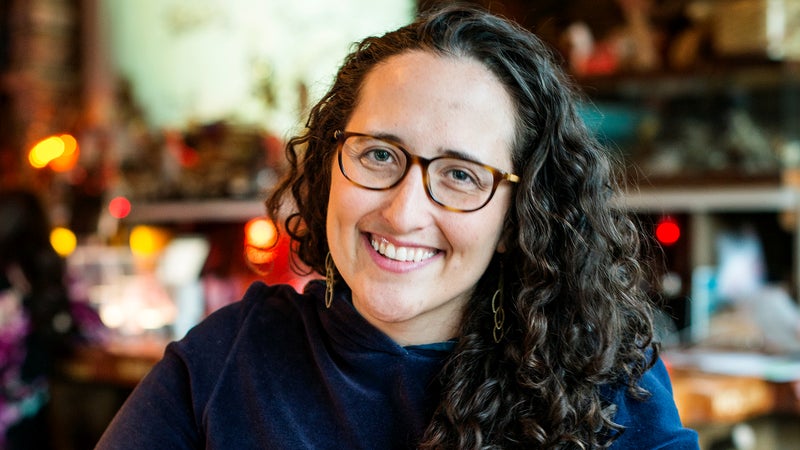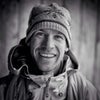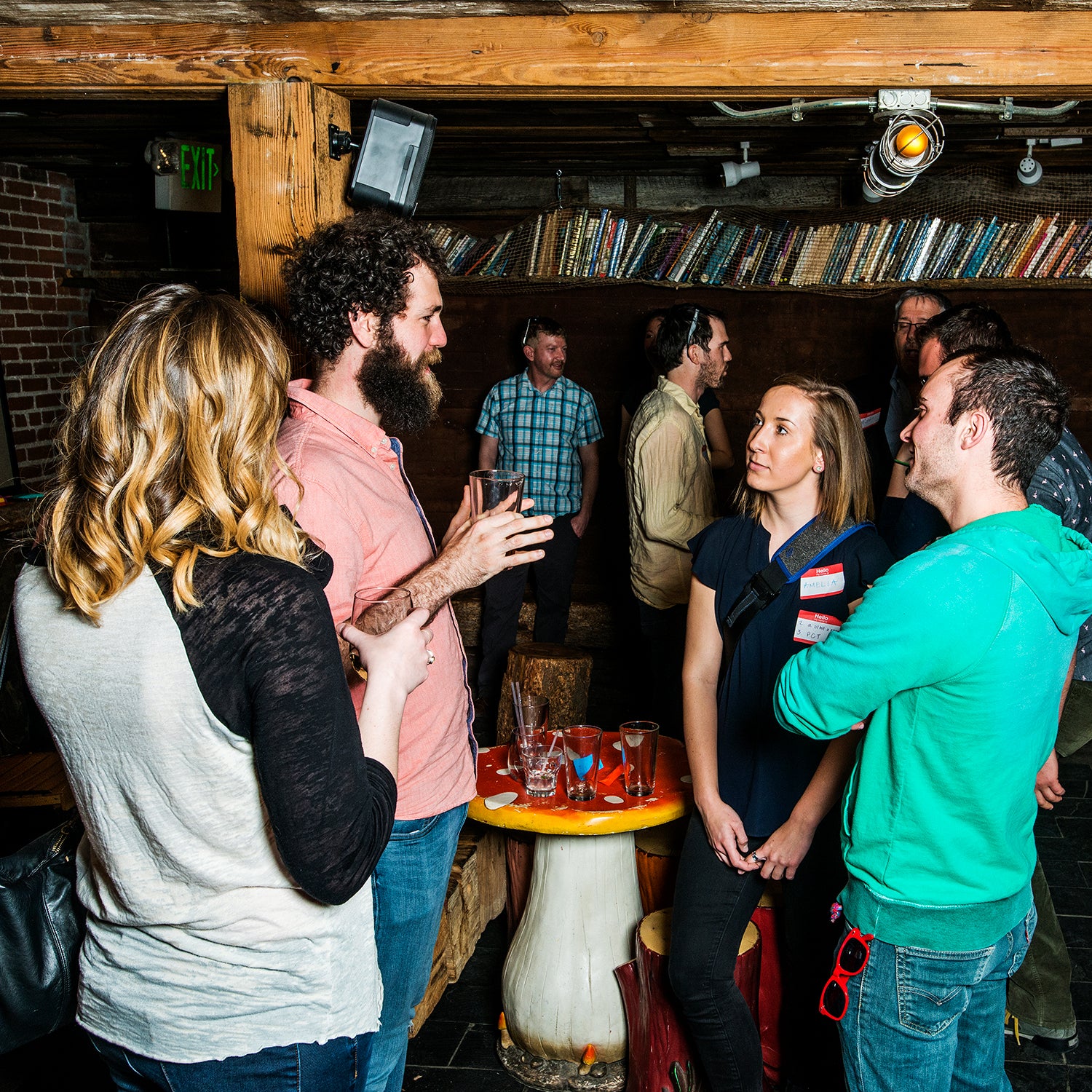Last February, on an unseasonably warm evening in Washington, D.C., 30 city dwellers gathered indoors at a bar in the Adams Morgan neighborhood to talk about going outside. A woman in her twenties arrived looking like she’d jogged over in her work clothes, and another lamented that she hadn’t been able to reserve space for the event, called Mappy Hour, outdoors.
—a portmanteau of maps and happy hour—got its start three years ago in New York City. The idea, says 26-year-old cofounder of Mappy Hour NYC, Alex Tilsley, is to “trade beta on adventures, facilitate relationships,” and generally make it easier for city-bound people to do what they love: get outdoors. The premise is that sometimes accomplishing those things means hanging out in a neighborhood pub, drinking beer, and swapping stories.
In 2014, Mappy Hour founder , a marketing professional living back east after a year ski-bumming at Utah’s Alta Lodge, was organizing , a ten-day series of urban excursions held throughout New York’s five boroughs. She wanted to put together an informal meetup to generate excitement, but as organizers of the wildly successful fitness group have discovered, millennials love combining recreation with socializing, and Mappy Hour took on a life of its own.

Today there are Mappy Hour chapters in D.C.; Denver; New York City; Austin, Texas; and Calgary, Alberta, Canada, with more launching this summer. One-off events, including two at and one at the trade show, have attracted more than 1,000 people in a half-dozen other cities. Last summer, the North Face brought ultrarunner and snowboarder to Mappy Hours in New York and D.C.; this year, Filson and Lowa Boots plan to sponsor meetups.
Mappy Hours typically have a theme, and at the one in D.C. in February it was diversity. (Others have tackled avalanche safety and the transition from climbing gym to crag.) Speakers from , a national organization that connects African American people to the outdoors, and Bethany Lebewitz, creator of an Instagram account called , worked through questions about identity and outdoor recreation. If the archetypal skier or climber is a white guy who lives in the back of a Sprinter van out west, where does that leave people who love the outdoors but don’t look the part? “I’m trying to find a community,” said Lebewitz, who started Brown Girls Climb last November, after moving to D.C. from Texas, as a way to connect with a diverse set of climbers.
To that end, most Mappy Hours include breakout sessions so attendees can make plans. “We want to get people talking to each other,” Tilsley says. Although the cost of insurance makes organizing official trips difficult, the Calgary, Alberta, chapter recently hosted a more far-flung event at British Columbia’s .
At the bar in Adams Morgan, Lauren Anneberg, a 33-year-old triathlete active with the November Project, was attending her first Mappy Hour. Anneberg works in international development and heard about the gatherings on Facebook. (Social-media word of mouth is how most people come across the group.) “There are tons of outdoorsy people and tons of happy hours,” she told me. Combining the two seemed obvious.
Millennials are more likely to reside in cities than their parents were, but Mappy Hour’s founders believe that an urban existence shouldn’t curtail time outside.
And, for many, necessary, since living in a city can be tough if you love spending time in nature. “I needed to be here in D.C.,” said Kevin Hesla, a Denver native who moved to the capital for work at a public-policy nonprofit. “I do a lot of hiking, and the big thing for me is getting someplace where there isn’t a crowd. It was hard to leave Colorado.”
“We’re all multifaceted people,” Knapp says. “Mappy Hour is there to feed that side of us and make sure that it’s a part of our identities that doesn’t get lost.” Millennials are more likely to reside in cities than their parents were, but Knapp believes that an urban existence shouldn’t curtail time outside. “I try not to think of it as a compromise,” she says.
Since the 2016 presidential election, Knapp has heard from people who want to explore Mappy Hour’s potential to take up social and political causes, especially around the environment. “There’s a little desperation,” she says. Knapp hopes that Mappy Hour’s recently launched website, which allows regulars to create their own profiles, will become a hub for all things outdoors, whether that’s planning a trip, building and maintaining trails, or organizing a protest. (Soon after going live, 600 people had signed up.) “People who live in cities and also care about the outdoors can be influential,” Knapp says. “We’re giving them a platform.”


